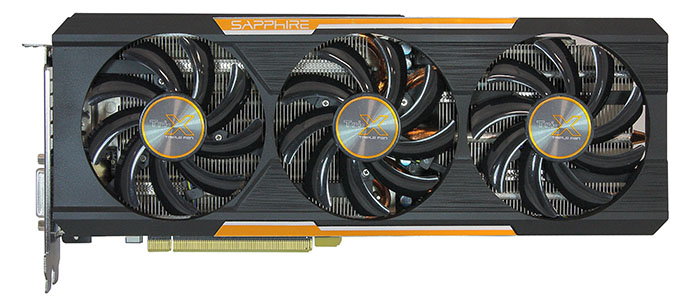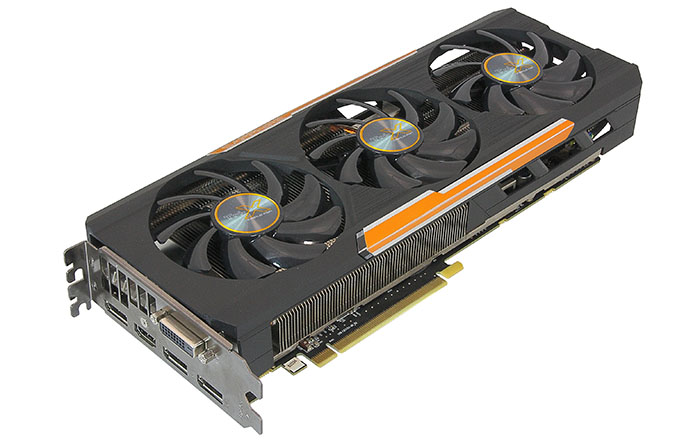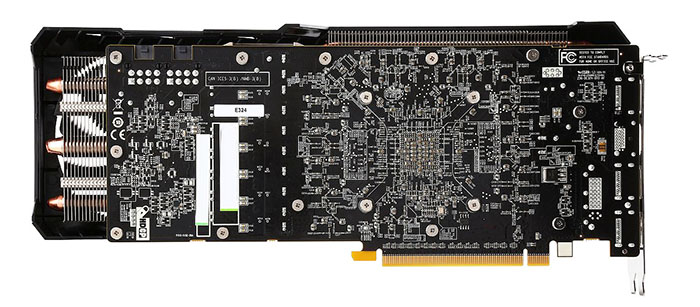Introduction
AMD reinvigorated its Radeon R7 and R9 discrete graphics card line-up just last week with the launch of the 300 series. The five new GPUs have already been taken on by the company's add-in board partners and released into the retail wild. Usually, a new family of graphics cards intimates new design, but such is the relatively modest progress of GPU development that these cards are based almost entirely on their 200-series predecessors.
For example, the R9 390X is largely a speed-bumped version of the R9 290X, the R9 390 offers the same minor boost over the R9 290, and so on. A full explanation can be found in a previous article located here.
Yet it remains sensible to take a look at a retail implementation of the R9 390X because, according to AMD, the performance uplift over 290X is enough for the GPU to ruffle the feathers of competitor Nvidia's GTX 980. Looking to spend about £350 on a graphics update? You need to evaluate whether the R9 390X has enough going for it to merit attention.
Sapphire is the best-known of AMD's partners and its Tri-X has proven to be efficient and capable. Strapped on top of the new R9 390X GPU, let's see if it's a winning combination.
Sapphire now splits its premium air cooling line into the Nitro, Tri-X, Vapor-X and Toxic families. Tri-X has historically offered a good compromise between cooling, noise and overall cost so it makes sense to equip it on the 390X board. Indeed, at the time of writing, it's the only cooling option offered on this new GPU.
Tri-X, as the name suggests, features three 90mm fans that stretch out over the 12in cooler which overhangs the edge of the PCB by a considerable margin. Improvements have been made over time as it now features dual ball bearings in each fan and an updated version of the Intelligent Fan Control feature that now turns the fans off completely under basic Windows load - previous versions turned the outer two off and left the central spinner in operation.
The well-built card fits into a dual-slot form factor, and power is sourced through two 8-pin connectors on the far side. Sapphire certainly believes that bigger is better for cooling by outfitting the heatsink with three 10mm heatpipes that run horizontally across the cooler. It's a significant beastie, too, tipping the scales at 1,050g. As is normal, the company includes black diamond chokes and long-life caps on this reference-beating model.
An aggressive cooler lends an air of expectancy for the frequencies so it's disappointing to see Sapphire inch the core clock up by just 5MHz, to 1,055MHz. You'll see later on that the core is capable of considerably more and competitors are making the most of this headroom by shipping their cards at up to 1,100MHz. The Tri-X leaves the memory at a default 6,000MHz, as well, meaning this is about as conservative as a Sapphire-branded card gets. Do be aware that the new 39x series are equipped with a standard 8GB of memory, double that of the previous generation, along with some extra driver-related features such as frame-rate control and virtual super resolution.
Previous premium models have often featured a heavyweight backplate that acts as a heatsink and a means by which to make the card more rigid. This new Tri-X cooler has an integrated card-wide heatsink that is now fully screwed into the PCB at multiple points removing the need for such a backplate, and this plate, which makes good contact with the PCB, covers the memory, VRMs and other hot-running components, too. Our hands-on examination reveals that it's all held together well enough.
You may just be able to see a button on the right-hand side. Its purpose is to enable dual BIOSes on this card, flitting between regular and UEFI compliance for faster booting on compatible systems.
Most of the air is vented out of the sides of the card rather than through the rear so there's no real reason to have a wide exhaust on the back. Dual-link DVI is augmented with three DisplayPort 1.2a and HDMI 1.4a. It's a shame that the newer v2.0 of the spec isn't supported, enabling 4K60 from popular HDMI. As an aside, it's a shame that AMD isn't extending the Radeon Rewards game bundle to this new range, particularly as they're more expensive than the eligible 2x0-series cards they replace.
Sapphire backs the card with a two-year warranty which falls a year short when compared to the cover offered on MSI and Asus rival cards. Pricing, though, is competitive, with the model being widely available for £345. Question is, is R9 390X really as fast as GTX 980?













